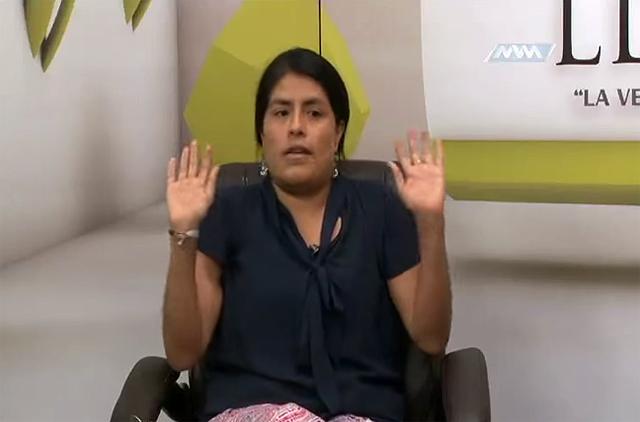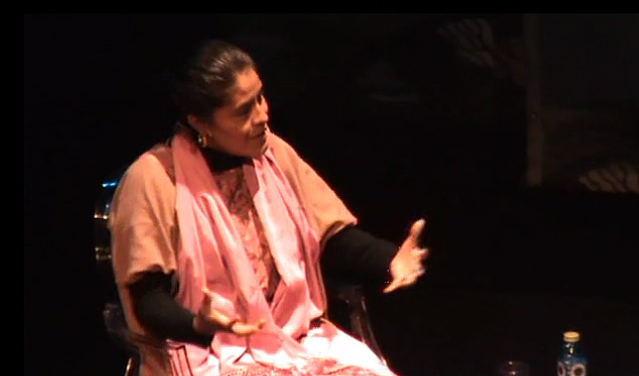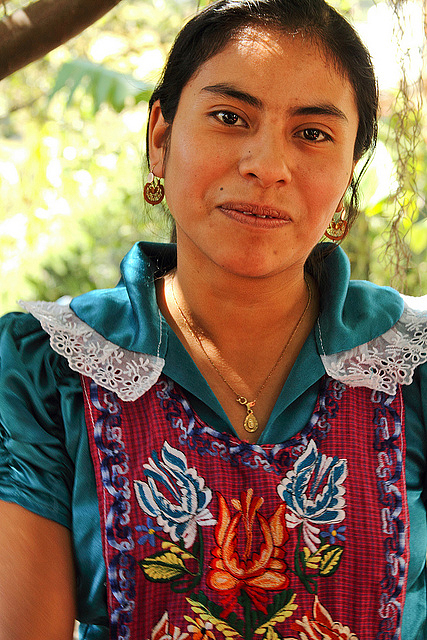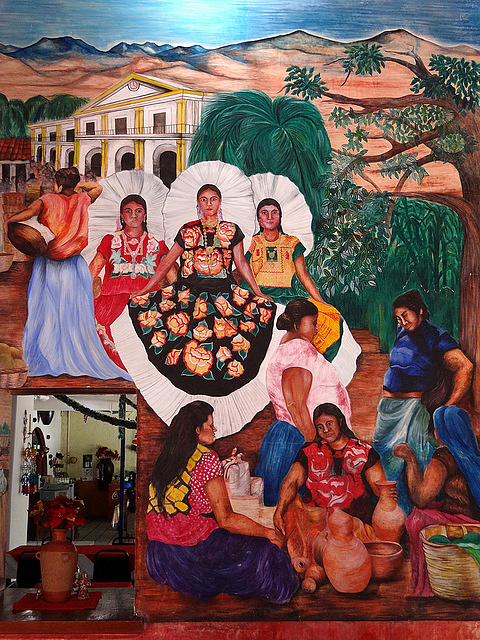Eufrosina Cruz Mendoza has had a fruitful career over the past 10 years as a successful politician, despite the initial resistance of the men in her hometown. The opposition to her election as mayor of the community made news headlines internationally nearly a decade ago since the town “fathers” had canceled the election results—it was contrary to Zapotec traditions and customs for women to vote, much less hold public office.

An English language news service, Mexico News Daily, just published a story updating the life of the famous lady and her cause—which is to make it easier for Mexico’s indigenous women to hold political offices and to gain visibility.
Ms. Cruz was from Santa Maria Quiegolani, a small town of 1,537 people located in the Southern Sierra region of the state of Oaxaca. Even as a young girl, she dreamed of getting more education and of learning to speak Spanish correctly, but her father was opposed. The proper role of women was to bear children for the men and to make tortillas, he said.

At the age of 12, she rebelled and made arrangements with relatives living in the city of Salina Cruz, an industrialized port on the south coast of the state, to move in with them. There she sold things like fruit and bubble gum to make money and to help pay for an education. In 2007, she returned to the small town of her birth, ran for the office of mayor, and won. But the men in charge of the town famously tore up the ballots and rejected the results. As a woman, she did not have the right to run for office.
The next year, however, she managed to get an amendment to the constitution of the state passed by the Congress of Oaxaca. It acknowledged that indigenous women must have the right to vote, to run for office, and to hold elected positions. In 2010, she ran for and was elected as a Deputy to the state Congress. Then she became the president of the Congress, the first indigenous woman to hold that position, and subsequently she became a Deputy to the federal Congress.

Ms. Cruz recently expressed herself candidly to the press: “I first had to wrest my freedom, [and to do so] I had to split my heart in two and leave my town; today, I am free to make my own decisions, and that’s just the beginning.” She continued, “Now I must contribute my part to help women and girls in indigenous communities wrest their own rights.” She said that she sees herself as an example for other girls to help them get over their fears and succeed. However, even after 10 years as a prominent politician, after being named by Forbes México as being among the 100 most powerful women in the nation, she still senses discrimination against herself.
Another news story published in Mexico News Daily on March 10 indicated that a group of women in Oaxaca, inspired by the successes of Ms. Cruz, founded Mexico’s first all women political party. The goals of the Revolutionary Women’s Party (PMR) are to advance the rights of women to run for political offices and to hold such positions, said Guadalupe Díaz Pantoja, the president of the group. Ms. Díaz said that women do not want to be viewed as objects ready to be manipulated. They want to vote, and to serve, without discrimination.

The best way to get a good overview of the position of women in Zapotec society is to examine some articles by Douglas Fry that discussed the issue. For instance, Fry (1992b), which is available as a PDF in this website, pointed out that Zapotec women rarely commit homicides as their men do. When women do get into a fight, which is less often than men, their aggression is less intense, consisting mostly of slapping, screaming, shoving and wrestling in contrast to the punching and kicking of the men.
While the women sometimes fight as a result of jealousy over a man, they also fight due to self-defense, envy, revenge or property. Occasionally, a wife who is beaten by her husband may complain to the authorities in the community. Zapotec men and women both agree that quarrels and arguments among men are more likely to lead to violence than disputes among women.

In another work that is also available as a PDF in this website, Fry (1994) wrote about the positions of Zapotec women in two different neighboring communities, one of which he called La Paz, the other San Andrés. He made it clear that in the former town, women had significantly better positions than they did in the latter. And, not surprisingly, La Paz was more peaceful than San Andrés.
Specifically, there were few instances of physical violence in La Paz versus many in San Andrés; during drinking events, fighting was uncommon in the one versus common in the other. In La Paz, people separate themselves when conflicts arise rather than begin fighting, whereas in San Andrés there were regular fist fights. And more to the point, Fry observed no instances of wife-beating in La Paz versus several in San Andrés.
In the more peaceful community, women were considered to be nearly equal and treated with respect by the men, whereas in the more violent town the men exhibited a lot of jealousy about the women. In fact, in La Paz unmarried men and women conversed at parties, while in San Andrés, Fry noted high levels of jealousy between men over perceived attentions of others toward their wives. While of course no towns are exactly alike, it does sound as if Ms. Cruz came from a town that could be better compared with San Andrés than with La Paz.